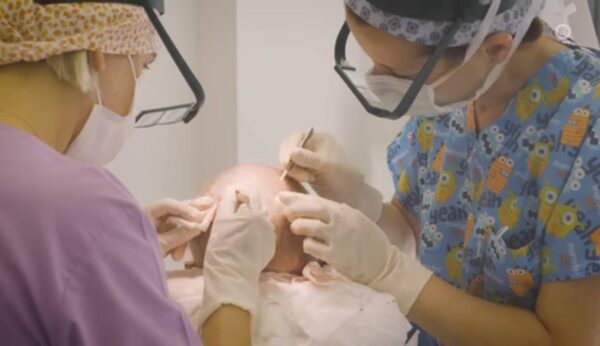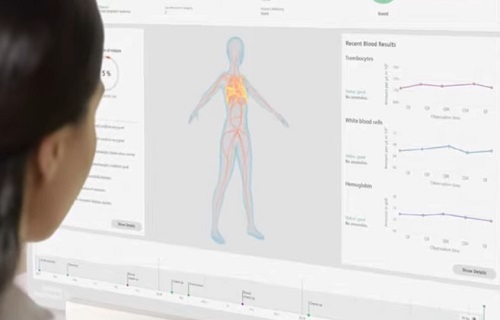Some people life is could be very hard because of some abnormalities crooked finger which comes from birth or accidents occured in life. Especially in childhood they have to face hard times in school or between friends. Beside that they have to overcome a lot of difficulties which very easy for us such as hold a glass, open a door, use hand tools and fork,spoon. Also crooked finger might cause some of serious mental problems such as insufficient communications with people and insecurity. If you or your family member suffer crooked finger this article is for you.


What is Crooked Finger ?
Crooked fingers, also known as finger deformities or finger contractures, refer to fingers that are bent or positioned in an abnormal way. There are several different types of finger deformities, including:
- Claw fingers: Claw fingers are fingers that are bent down at the middle joint and upward at the tip, giving them a claw-like appearance.
- Hammertoes: Hammertoes are toes that are bent downward at the middle joint, causing the tip of the toe to point downward.
- Mallet fingers: Mallet fingers are fingers that are bent downward at the tip joint, causing the tip of the finger to point downward.
- Swan neck deformities: Swan neck deformities are fingers that are bent upward at the middle joint and downward at the tip joint, giving them a swan-like appearance.
Finger deformities can be caused by a variety of factors, including congenital conditions (present at birth), injuries, arthritis, and certain medical conditions. Treatment for crooked fingers may include splinting, physical therapy, and, in some cases, surgery.
If you have crooked fingers and are experiencing discomfort or difficulty using your hands, it is important to see a healthcare provider for a proper diagnosis and treatment. You need to see clinodactyly doctor about this problem. They can determine the cause of the deformity and recommend the best course of treatment for your specific needs.
Reasons of Crooked Finger in Newborn :
There are several potential causes of crooked fingers in newborns or babies. Some of the most common causes include:
- Congenital conditions: Some babies are born with crooked fingers due to congenital conditions, such as syndactyly (fused fingers) or clinodactyly (curved fingers). These conditions are usually inherited and are present at birth.
- Birth injuries: Injuries sustained during birth, such as fractures or dislocations, can cause crooked fingers in newborns or babies.
- Tight swaddling: Tightly swaddling a newborn or baby can cause their fingers to become crooked over time, as the constant pressure can lead to deformities.
- Developmental issues: In some cases, crooked fingers in newborns or babies may be a result of developmental issues, such as an abnormal growth pattern or insufficient muscle strength.
If you are concerned about crooked fingers in your newborn or baby, it is important to speak with a healthcare provider. They can evaluate your child and determine the cause of the deformity, as well as recommend appropriate treatment. You have to go a clinodactyly doctor about crooked finger problem. Treatment options may include splinting, physical therapy, and, in some cases, surgery.



Reasons of Crooked Finger in Adults :
Crooked fingers, also known as finger deformities or finger contractures, can be caused by a variety of factors at any stage of life. Some of the most common causes of crooked fingers include:
- Arthritis: Arthritis, a condition that causes inflammation in the joints, can lead to finger deformities.
- Tendinitis: Tendinitis, which is inflammation of the tendons, can cause finger deformities.
- Fractures: Fractures or breaks in the bones of the fingers can lead to deformities.
- Burns: Burns or other injuries to the fingers can cause scar tissue to form, which can lead to deformities.
- Medical conditions: Certain medical conditions, such as cerebral palsy or muscular dystrophy, can cause finger deformities.
- Genetics: Some people may be born with crooked fingers due to genetic factors.
If you have crooked fingers and are experiencing discomfort or difficulty using your hands, it is important to see a healthcare provider for a proper diagnosis and treatment. They can determine the cause of the deformity and recommend the best course of treatment for your specific needs. Treatment options may include splinting, physical therapy, and, in some cases, surgery.
Crooked Finger Treatment :
There are several treatment options available for crooked fingers, also known as finger deformities or finger contractures. The most appropriate treatment will depend on the cause of the deformity, the severity of the deformity, and the overall health of the patient. Some common treatment options for crooked fingers include:
- Splinting: Splinting involves using a splint or brace to hold the finger in a straight position and prevent further deformity. Splinting is often used to treat mild to moderate finger deformities.
- Physical therapy: Physical therapy can help improve range of motion and strength in the fingers and may be recommended as part of treatment for crooked fingers.
- Surgery: In some cases, surgery may be necessary to correct crooked fingers. The type of surgery used will depend on the cause and severity of the deformity.
What is the Risks of Crooked Finger Operations ?
Splinting is a common treatment option for crooked fingers, also known as finger deformities or finger contractures. It involves using a splint or brace to hold the finger in a straight position and prevent further deformity. Splinting is often used to treat mild to moderate finger deformities and is generally considered to be a safe and effective treatment option.
There are some potential risks associated with splinting, but they are usually minimal. Some of the potential risks of splinting include:
- Skin irritation: The splint may cause irritation or chafing of the skin, especially if it is not properly adjusted or if it is worn for an extended period of time.
- Reduced mobility: Wearing a splint may temporarily reduce mobility in the affected finger, which can make it more difficult to perform certain tasks.
- Infection: There is a small risk of infection if the splint becomes contaminated or if it is not properly cared for.
Overall, the risks of splinting are usually outweighed by the potential benefits, and splinting is generally considered to be a safe and effective treatment option for crooked fingers. If you are considering splinting as a treatment option for crooked fingers, it is important to discuss the potential risks and benefits with a healthcare provider. They can help you understand the likelihood of success and the potential side effects of the procedure.



Surgery is a treatment option for crooked fingers, also known as finger deformities or finger contractures, in some cases. The type of surgery used will depend on the cause and severity of the deformity.
Like any surgical procedure, there are some potential risks associated with surgery for crooked fingers. Some of the potential risks include:
- Infection: There is a risk of infection following surgery, which can be serious and potentially life-threatening.
- Bleeding: There is a risk of bleeding during and after surgery, which can lead to complications.
- Anesthesia risks: There are risks associated with anesthesia, including allergic reactions and respiratory problems.
- Nerve damage: There is a risk of nerve damage during surgery, which can cause numbness or tingling in the affected finger.
- Persistent deformity: In some cases, surgery may not fully correct the deformity, and the finger may remain crooked.
Overall, the risks of surgery for crooked fingers are generally considered to be low, but it is important to discuss the potential risks and benefits with a healthcare provider before deciding on treatment.
Tips for Daily Life With Crooked Finger :
Here are a few tips that may be helpful in managing crooked fingers in daily life:
- Protect your fingers: If you have crooked fingers, it is important to protect them from injury. Wear gloves when doing activities that may put your fingers at risk, such as gardening or using tools.
- Use assistive devices: Assistive devices, such as splints or grips, can help you perform tasks more easily and comfortably. Consider using these devices if you are having difficulty gripping objects or performing certain tasks.
- Exercise your fingers: Regularly exercising your fingers can help improve range of motion and strength. Consult with a physical therapist or occupational therapist for specific exercises that may be helpful for your condition.
- Take care of your overall health: Maintaining a healthy lifestyle, including eating a healthy diet, getting regular exercise, and managing stress, can help improve overall hand function and reduce the impact of crooked fingers on daily life.
- Seek medical treatment: If you are experiencing discomfort or difficulty using your hands due to crooked fingers, it is important to see a healthcare provider for a proper diagnosis and treatment. They can recommend the best course of treatment based on your individual needs.
Be patient and try to stay strong physical and mental. With latest scientific developments surgery technology get a very high success rate in this type situation. You can get rid of crooked finger forever.

